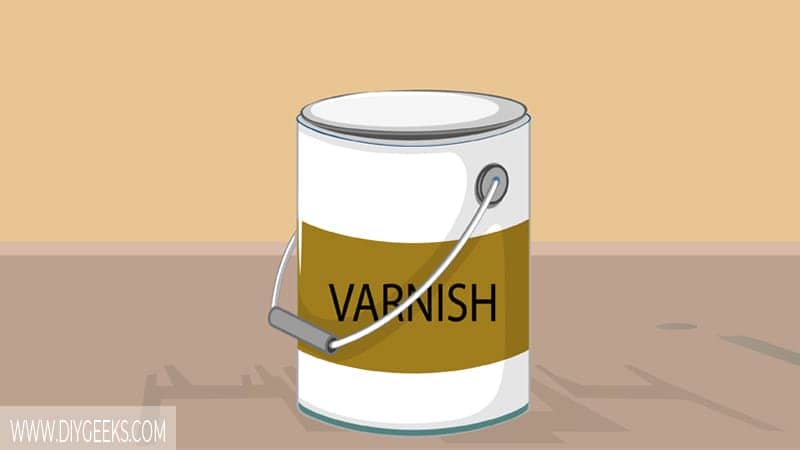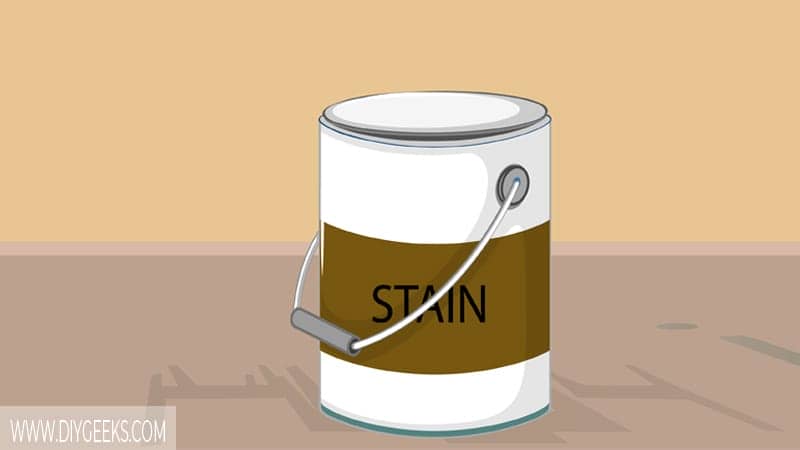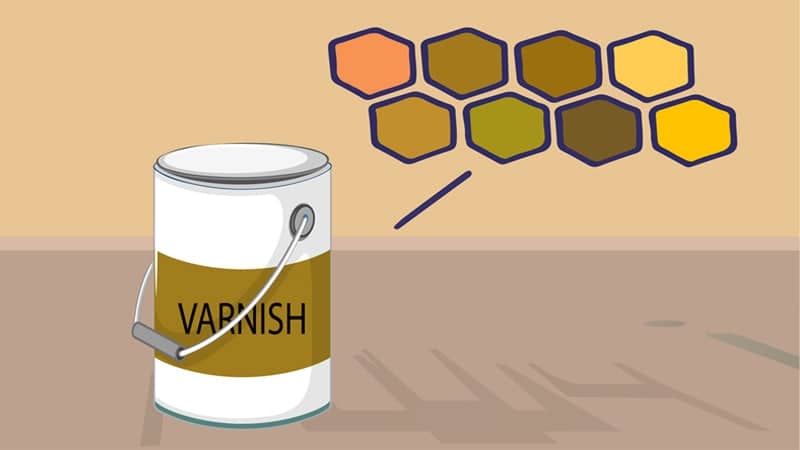Varnish is a protective coating that protects underlying surfaces from moisture, water, and scratches. Wood stain is a finishing coating that enhances the wood appearance and offers low protection levels.
Varnish is more durable, is easier to clean and maintain, and offers better wood protection than wood stain. Wood stain dries faster and enhances the wood appearance better than varnish.
In simple words, wood stain highlights the wood grain, patterns, and texture, while varnish creates a transparent (or colored) protective coating over painted or stained surfaces.
What is Varnish?

Varnish is a clear (or colored) protective coating that protects underlying surfaces from moisture, water, scratches, and weather elements. It forms a glossy moisture-resistant coating that shields the underlying surface from water or moisture.
There are different varnish types, each with its distinct features and application methods, but all types protect the underlying surface.
Varnish is a topcoat and is usually applied to protect a surface that is painted or stained.
Related Read: Can You Apply Varnish Over Stain?
What is Wood Stain?

Wood stain is a finish type that enhances the wood appearance, offers low protection levels, and shows the wood grain.
Its coating penetrates the surface pores and creates an amber-like finish that highlights the wood grain, patterns, and texture.
There are different wood stain types including oil-based and water-based stains, gel stains, lacquer stains, etc.
The wood stain formula consists of solvent, pigments, binders, and penetrating agents. Its finish offers low protection and can’t withstand outdoor weather elements.
Varnish vs Wood Stain
The differences between varnish and wood stain are listed below.
Formula

Varnish has a formula made of resins, drying oils, and protective additives that form a moisture-resistant coating and protect the underlying surfaces. The exact varnish formula depends on the type.
Wood stain has a formula made of solvent, pigments, binders, and penetrating agents.
Application
Varnish is harder to apply than wood stain as it has a thick viscosity that can leave brush marks behind.
Wood stain is easier to apply if you do enough prep work. As long the surface is cleaned and sanded, wood stain penetrates the surface pores with ease.
Durability
Varnish is more durable than wood stain as it forms a moisture-resistant layer (barrier) over the surface and protects it from water, scratches, moisture, and weather elements.
Wood stain isn’t a durable finish because it doesn’t contain protective additives and doesn’t have a moisture-resistant finish. Its finish will be removed if exposed to constant water or moisture.
Interior or Exterior Use
You can use varnish over interior and exterior surfaces as the sealer creates a moisture-resistant layer that protects surfaces from weather elements.
You can’t use normal wood stain over exterior surfaces as its finish isn’t durable or protective enough to withstand weather elements. However, exterior wood stains can be used over exterior surfaces as they are formulated with extra protective additives.
Cleaning and Maintenance
Varnish is easier to clean and maintain as creates a glossy moisture-resistant finish that doesn’t attract dust and isn’t damaged by solvent-based cleaning products.
Wood stain is harder to clean and maintain as it accumulates dust or debris while drying and you can’t use solvent-based cleaning products to clean it as it can damage its finish.
Dry Time
Wood stain dries faster than varnish as it has fewer additives and its solvent (water or oil) evaporates faster.
Water-based wood stain takes less than one (1) hour to dry between coats, while oil-based wood stain takes around one (1) hour. Water-based varnish takes around 6 hours to dry between coats, while oil-based varnish takes around 24 hours.
Cost
Varnish is more expensive than wood stain as it offers more protection, is more durable, and lasts longer.
Finish Type
Varnish creates a glossy transparent (or colored) moisture-resistant coating over the surface and protects it from water, moisture, and scratches. The varnish color shade depends on whether the sealer is tinted or not.
Wood stain creates a dry amber-like finish that enhances the wood’s appearance and makes it look darker.
Wood Protection
Varnish offers better wood protection than wood stain as it’s formulated with protective additives that form a moisture-resistant layer over the surface.
Wood stain offers low wood protection and its finish will get removed if exposed to constant water or moisture. The wood stain protection level is enough for low-traffic interior surfaces, but it can’t withstand exterior high-traffic surfaces exposed to constant water.
Which Wood Finish Do You Need?
Before choosing a wood finish, consider the following things.
- Budget: Use wood stain if your budget is low as it costs less than varnish.
- Protection: Use varnish if you want higher surface protection.
- Color: Use wood stain or tinted varnish if you want to change the surface color shade.
- Surface Type: Use wood stain for low-traffic interior surfaces and varnish for high-traffic exterior surfaces.
To get the best wood finish, apply two wood stain coats, wait for them to dry, and seal the finish with varnish. The wood stain enhances the wood appearance while varnish protects the surface.
[sc name=”varnish-vs-stain”]


